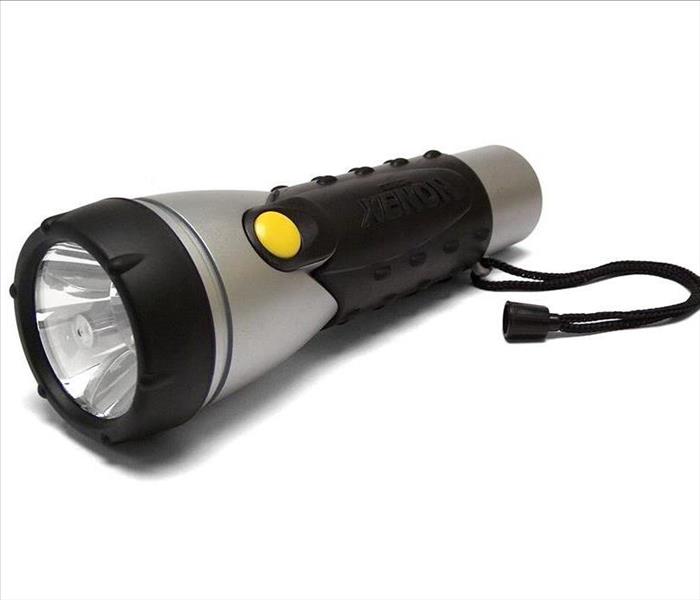12 Things to Do During a Power Outage
1/11/2018 (Permalink)
Surprisingly, power outages are even getting worse in the USA. According to Inside Energy, the annual average of power outages doubles every five years! The reason for this has to do with aging infrastructure, more frequent storms, and problems sustaining the electric grid as populations grow.
Despite how common power outages are, few people are prepared for them and even fewer people know what to do if the power goes out.
Steps to Take Immediately After the Power Goes Out
Step 1: Turn On Your Emergency Lights
Make sure your emergency lights are somewhere accessible in case you have to find them in the dark. Ideally, keep a flashlight in each room of your home.
In general, it is better to use battery-operated lights instead of candles because of the fire risk.
Step 2: See If Your Neighbors Have Power
If your neighbors still have electricity, then the problem is likely inside your home. Start by checking the main fuses or circuit breakers to see if they have blown.
Step 3: Check the Extent of the Problem
If your neighbors also don’t have electricity, you’ll want to see how wide-spread the problem is. You can do this by calling your power supplier. It might take a while to get through to them if a lot of people are trying to call.
You can also try calling friends who live nearby to see if they have power or not.
Step 4: Contact Family Members
During large power outages, stoplights and streetlights can go out too – making it unsafe to drive.
If your family members aren’t at home, get in contact with them. It might be best for them to remain at their current location until it is safer for them to come home.
Note that your family should have a contact plan in place.
Step 5: Unplug Appliances
When the power comes back on, it can cause a huge power spike which may damage electronics.
Hopefully all of your sensitive electronics are on surge protectors.
Even if they are, it is still smart to unplug all of your sensitive (expensive) electronics from the wall so they don’t get damaged when the power comes back on.
Step 6: See if Water is Safe to Drink
When the power goes out, water treatment centers might not work. You could still have clean-looking water coming from the tap, but it might not be safe to drink!
Call your local authorities to see if the water is safe to drink. Or, you can listen to your emergency radio to see if there is a “boil alert” in place.
**If you are unsure whether the water is safe to drink, always play it safe! Treat water before drinking it or use bottled water.
Step 7: Keep Fridge and Freezer Closed
According to Ready.gov, food kept in an unopened refrigerator will stay cold for about 4 hours.
A full freezer will keep its temperature for about 48 hours. You can learn more about this on their food safety page.
Step 8: Save Your Phone’s Battery
Turn off any power-consuming apps on your phone to save its battery. Do this even if you have a solar charger because you might not always be able to charge it.
Step 9: Stay Cool (Summer Power Outages)
If the power outage occurs during a heat wave and you have health conditions, then you might need to evacuate your home to a cooler location, such as a shopping mall or church.
Step 10: Stay Warm (Winter Power Outages)
If the power outage occurs during winter, now is the time to start using your emergency heating method. A wood stove is my personal favorite off-grid heating method.
Be cautious about using generators, camp stoves, or grills for heating as they can cause carbon monoxide poisoning.
You can get some passive solar heating during the daytime by keeping all curtains closed except those on south-facing windows. Close all drapes at night to trap some heat, and line windows and doorways with towels to prevent heat from escaping.
Step 11: Prevent Pipes from Freezing (Winter Power Outages)
Hopefully your pipes are well insulated so they don’t freeze. The easiest way to prevent pipes from freezing during power outages is to let a small stream of water flow through the faucets.
For long-term power outages during extreme weather, you’ll want to drain your hot water heater. You will also need to winterize the drainage system by putting antifreeze into the drain traps below toilets, sinks, washing machines, etc.
12. Stay Sane!
Play games, make shadow puppets, hang out with the neighbors in the dark… You might even enjoy the power outage and the digital detox it gives you!






 24/7 Emergency Service
24/7 Emergency Service
